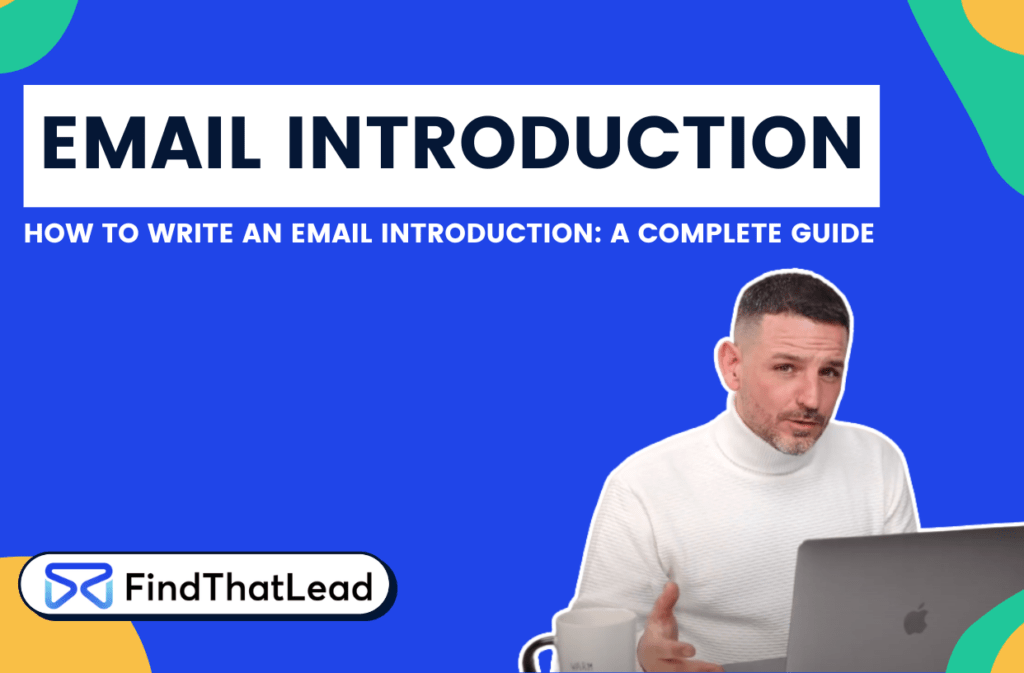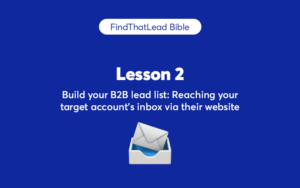In the world of professional communication, the way we introduce ourselves can set the tone for our relationships. Whether you’re reaching out to a potential client, a prospective employer, or a new colleague, your email introduction is often the first impression you make. It’s your chance to show not only who you are but also what you bring to the table.
In this guide, we’ll explore the importance of a well-crafted email introduction and provide you with practical tips to master this essential skill.
Shall we start?
Understanding the importance of Email Introduction
Email has become a ubiquitous form of communication in the professional world. It’s quick, efficient, and allows us to connect with people across the globe, this is nothing new. But with this convenience comes a challenge: how do we convey our personality, professionalism, and intentions in a medium that is often impersonal and fleeting?
306 billion e-mails are received and sent every day, how can we differentiate ourselves?
First impression matters: Why email introduction is essential
An email introduction is more than just a greeting; it’s your digital handshake. It’s the first step in establishing a relationship, and as with any first impression, it can significantly influence how you’re perceived. A well-crafted email introduction can pique the recipient’s interest, establish credibility, and set the stage for positive ongoing communication. A poorly constructed introduction will confuse the recipient or, worse, make them dismiss your email altogether.
The art of professional email introduction
Crafting a professional email introduction is a bit like making a good first impression on a first date. It’s your chance to show who you are, express your interest, and hopefully, spark a connection. Let’s delve deeper into the key elements of a professional email introduction.
Key Elements of Introducing Yourself in an Email
When writing an email introduction, it’s like assembling a puzzle. Each piece has its place and purpose, and when they all come together, they create a clear picture of who you are and what you’re about. Let’s break down these pieces:
Subject Line: Make it Compelling
Think of your subject line as the headline of a news article. It’s the first thing your recipient sees, and it can make the difference between your email being opened or ignored. So, how do you make your subject line compelling?
First, keep it short and sweet. Most email clients cut off subject lines after about 60 characters, so aim to convey your message in fewer words.
Second, be specific and relevant. If you’re introducing yourself as a new team member, for example, your subject line might be “Hello from [Your Name], Your New [Job Title].”
Finally, avoid using all caps or excessive punctuation, as this can make your email look like spam.
Email Body: First Impression and Clarity
The body of your email is where you get to introduce yourself and explain why you’re reaching out. This is your chance to make a good first impression, so make it count.
Start by greeting your recipient by name, if possible. This adds a personal touch and shows that you’ve taken the time to tailor your email to them.
Next, state the purpose of your email. Be clear and concise to ensure your message is understood. Remember, your recipient probably has a lot of emails to get through, so make yours easy to read.
Finally, end your email with a clear call to action. What do you want your recipient to do next? Whether it’s replying to your email, scheduling a call, or checking out your website, make sure it’s clear and easy for them to take the next step.
Signing Off: Contact Details and Call to Action
Signing off your email is more than just a polite way to end your message. It’s also an opportunity to provide your contact details and a final call to action.
First, choose a professional and friendly sign-off. Something like “Best,” “Kind regards,” or “Sincerely” works well in most cases.
Next, include your full name and your job title. This not only reinforces who you are but also adds a level of professionalism to your email.
Finally, include your contact details, such as your phone number and LinkedIn profile, and a final call to action. This could be a reminder to reply to your email, a request to schedule a call, or an invitation to check out your website.
Best practices for professional introduction email
We’ve talked about the key elements of a professional email introduction and some best practices. Now, let’s turn to some practical tips that can help you craft a compelling introduction.
Personalizing Your Email Greeting Based on Your Relationship with the Recipient
The way you greet your recipient can set the tone for the rest of your email. Here are some tips on how to personalize your greeting based on your relationship with the recipient:
- If you have a formal relationship with the recipient: If you’re writing to a superior, a client, or someone you don’t know well, you can keep your greeting formal. (Mr., Mrs., Dr., etc.) and their last name. For example, “Dear Dr. Smith.”
- If you have an informal relationship with the recipient: If you’re writing to a colleague, a long-time client, or someone you know well, you can use a more casual greeting. Use their first name, like “Hi John.”
- If you’re unsure about your relationship with the recipient: If you’re not sure how formal or casual to be, maybe it’s best to err on the side of caution and use a more formal greeting (I never do it 😝). As you continue to communicate with the person, you can adjust your tone based on their responses.
Adapting Your Email Tone to Different Contexts
The tone of your email should match the context of your message and the expectations of your recipient. Here are some tips on how to adapt your tone to different contexts:
- If you’re writing in a professional context: Keep your tone polite. Use full sentences and be respectful. For example, “I’m writing to talk about…”
- If you’re writing in a casual context: You can use a more relaxed and friendly tone. It’s okay to use contractions, colloquial expressions, and even emojis (if appropriate). For example, “Just checking in to see how…”
- If you’re writing in a persuasive context: Use a confident and enthusiastic tone. Highlight the benefits of your proposal and use persuasive language. For example, “I’m confident that our services can…”
Be Clear and Concise
When it comes to crafting an email introduction, think of yourself as a tour guide. You’re leading your reader on a journey, and you want to make sure they don’t get lost along the way. That’s where clarity and conciseness come in. Start by stating your purpose right off the bat. It’s like giving your reader a map so they know where they’re going.
Tip: You don’t always have to say who you are, it is much more valuable to explain what you do, and what value you bring.
Then, use simple language. You wouldn’t use complicated jargon with a tour group, right? The same goes for your email. And remember, keep it short. A good tour guide knows when to stop talking and let the sights speak for themselves.
Show Genuine Interest
Now, imagine you’re at a networking event. You wouldn’t just walk up to someone, introduce yourself, and then walk away, would you? Of course not. You’d show interest in the other person. You’d ask about their work, compliment their achievements, and express curiosity about their experiences. That’s exactly what you should do in your email introduction.
Take the time to learn about your recipient and show genuine interest in them. It’s not just polite, it’s also a great way to build a connection.
End with a Clear Call to Action
Finally, think of your email as a movie. You’ve set the scene, introduced the characters, and told the story. Now, it’s time for the climax with a call to action. This is where you guide your reader on what to do next. Be specific and make it easy for them. It’s like rolling out the red carpet, inviting them to take the next step. And don’t forget to highlight the benefits. After all, everyone loves a happy ending.
How to introduce yourself in an email?
Alright, let’s get into the fun part, examples! Seeing real-life examples can often make things click into place. So, let’s take a look at a few scenarios where you might need to introduce yourself via email.
Email Introduction Example: New Employee Introduction
So, you’ve landed a new job (congrats, by the way!), and you need to introduce yourself to your new team. Here’s how you might do it:
Subject Line: Hello from [Your Name], Your New [Job Title]
Email Body: Hi Team,
I’m [Your Name], your new [Job Title], and I’m thrilled to be joining [Company Name]. I come with [number of years of experience] in [your field], and I’m looking forward to bringing my skills and enthusiasm to our projects.
I’m a big believer in open communication, so please feel free to reach out if you have any questions, need my assistance, or just want to chat over a virtual coffee. I’m looking forward to getting to know all of you and contributing to our team’s success.
Best, [Your Name]
Professional email introduction example: Self-introduction to Clients
Now, let’s say you’re reaching out to a potential client for the first time. You want to introduce yourself, your services, and how you can provide value to them. Here’s an example:
Introductory email to client example: First-time Contact
Sometimes, you might need to introduce yourself to a client you’ve never met before. Here’s how you might do it:
Subject Line: [Your Name] from [Your Company] – Let’s Connect!
Email Body: Hello [Client’s Name],
I hope this email finds you well. In [Your Company] we specialize in [briefly describe what your company does].
I recently came across your profile and was impressed by your work in [Client’s field]. I believe that our services could be of great benefit to your current and future projects.
I would love to set up a time to chat more about how we can assist you. Please let me know a time that works best for you, and we can schedule a call.
Looking forward to the possibility of working together.
Best, [Your Name]
Navigating different scenarios: Introduction emails for various occasions
Email introductions aren’t one-size-fits-all. Depending on the situation, you might need to tweak your approach. Let’s look at a few different scenarios.
Introduction Email to Colleagues
Let’s say you’ve just joined a new team, and you want to introduce yourself to your new colleagues. Here’s how you might do it:
Subject Line: Hello from [Your Name], Your New Teammate
Email Body: Hello Team,
I hope this email finds you well. I’m [Your Name], the new [Your Job Title], and I’m excited to be a part of the team. I bring with me [number of years of experience] in [your field], and I’m looking forward to contributing to our shared success.
I’m a firm believer in open communication and collaboration, so please feel free to reach out if you have any questions, need my assistance, or just want to say hello. I’m looking forward to getting to know all of you.
Best, [Your Name]
Self-Introduction to a new team
Imagine you’ve been assigned to a new project team within your organization. You want to introduce yourself and express your excitement about the project. Here’s how you might do it:
Subject Line: Excited to Join the Team – Introduction from [Your Name]
Email Body: Hello Team,
I hope this email finds you well. I’m [Your Name], currently working as a [Your Job Title] in the [Your Department] department. I’m thrilled to be joining this project team and look forward to contributing to our shared goals.
I bring with me [number of years of experience] in [your field], and I’m particularly interested in [specific aspect related to the project]. I believe in the power of collaboration and open communication, so please feel free to reach out if you have any questions, need my assistance, or just want to chat about the project.
Looking forward to working with all of you.
Best, [Your Name]
Introduction to potential business partners
Now, let’s say you’re reaching out to a potential business partner for the first time. You want to introduce yourself, your business, and express your interest in a partnership. Here’s how you might do it:
Subject Line: [Your Name] from [Your Company] – Exploring Partnership Opportunities
Email Body: Hello [Recipient’s Name],
I hope this email finds you well. In [Our company] We specialize in [briefly describe what your company does].
I recently came across your company, [Recipient’s Company], and was impressed by [something specific about their company]. I believe that a partnership between our companies could bring mutual benefits and open up new opportunities.
I would love to set up a time to chat more about this potential partnership. Please let me know a time that works best for you, and we can schedule a call.
Looking forward to the possibility of working together.
Best, [Your Name]
Example of how to introduce yourself
Sometimes, you might be reaching out to someone for the first time without a specific purpose, like a job application or a business proposal. You just want to introduce yourself and establish a connection. Here’s how you might do it:
Subject Line: [Your Name] – Looking to Connect
Email Body: Hello [Recipient’s Name],
I hope this email finds you well. My name is [Your Name], and I’m currently working as a [Your Job Title] at [Your Company]. I came across your profile and was really impressed by your work in [Recipient’s field].
I’m always looking to connect with professionals in our industry, and I believe we could learn a lot from each other. If you’re open to it, I’d love to schedule a time to chat more about your work and share a bit about mine.
Please let me know a time that works best for you, and we can set up a call.
Looking forward to the possibility of connecting.
Best, [Your Name]
The ultimate template for your professional introduction email
Now, let’s bring it all together with a template that you can use as a starting point for your own email introductions. Remember, the best emails are personalized, so feel free to tweak this to fit your style and the specific situation.
Subject Line: [Your Name] from [Your Company] – Let’s Connect
Email Body: Hello [Recipient’s Name],
I hope this email finds you well. My name is [Your Name], We specialize in [briefly describe what your company does].
I recently came across your work and was really impressed by [something specific about their work or company]. I believe that [your company] and [recipient’s company or work] have a lot in common, and I’m interested in exploring how we might be able to collaborate.
I would love to set up a time to chat more about this. Please let me know a time that works best for you, and we can schedule a call.
Looking forward to the possibility of working together.
Best, [Your Name]
Common Mistakes to Avoid in Email Introductions
Writing an email introduction can sometimes feel like navigating a minefield. There are so many things to consider and so many ways it can go wrong. But don’t worry, I’ve got your back. Let’s talk about some common mistakes and how to sidestep them.
Overly Formal or Casual Tone
Getting the tone right in your email is crucial. If you’re too formal, you risk coming off as cold and impersonal. If you’re too casual, you might not be taken seriously. The key is to find a balance. Be professional, but also be yourself. Show some personality. And remember, it’s better to be a bit too formal than too casual.
Long, Complex Sentences
Nobody likes to read a sentence that goes on forever. It’s confusing and it’s tiring. So, keep your sentences short and sweet. Make your point and move on. And if you have a lot to say, break it up into smaller paragraphs. It makes your email easier to read and your points easier to digest.
Neglecting to Personalize Your Email
We all like to feel special, right? So, make your recipient feel special. Use their name. Mention something specific about them or their work. Show them that this email is for them and only them. It’s a small touch, but it can make a big difference.
Failing to Clearly State Your Purpose
Don’t keep your recipient guessing. Tell them why you’re reaching out. Are you introducing yourself? Are you proposing a collaboration? Whatever it is, state it clearly. It sets the tone for the rest of your email and lets your recipient know what to expect.
Forgetting to Proofread
Typos and grammatical errors are like stumbling blocks. They disrupt the flow of your email and can make you look careless. So, always proofread your email. Check for spelling mistakes, grammatical errors, and awkward phrasing. A clean, error-free email shows that you care about your communication and your recipient’s reading experience.
Final thoughts on mastering email introductions
So, there you have it. We’ve covered why email introductions are important, the key elements of a good introduction, some best practices, and even provided some examples for different scenarios. But remember, these are just guidelines. The most important thing is to be authentic and true to yourself.
These tips also apply to any type of cover letter, including LinkedIn Inmail.
Your email introduction is a reflection of you. It’s your chance to show your recipient who you are and what you bring to the table. So, don’t be afraid to let your personality shine through. Be professional, but also be you.
And remember, practice makes perfect. The more you write email introductions, the better you’ll get at it. So, don’t be discouraged if your first few attempts don’t go as planned. Keep trying, keep learning, and you’ll master the art of email introduction in no time.







 BONUS:
BONUS: The Challenge: Join this free course and I guarantee that after 5 days you will have the necessary skills to start generating B2B clients Growth Hacking and Prospecting techniques.
The Challenge: Join this free course and I guarantee that after 5 days you will have the necessary skills to start generating B2B clients Growth Hacking and Prospecting techniques.